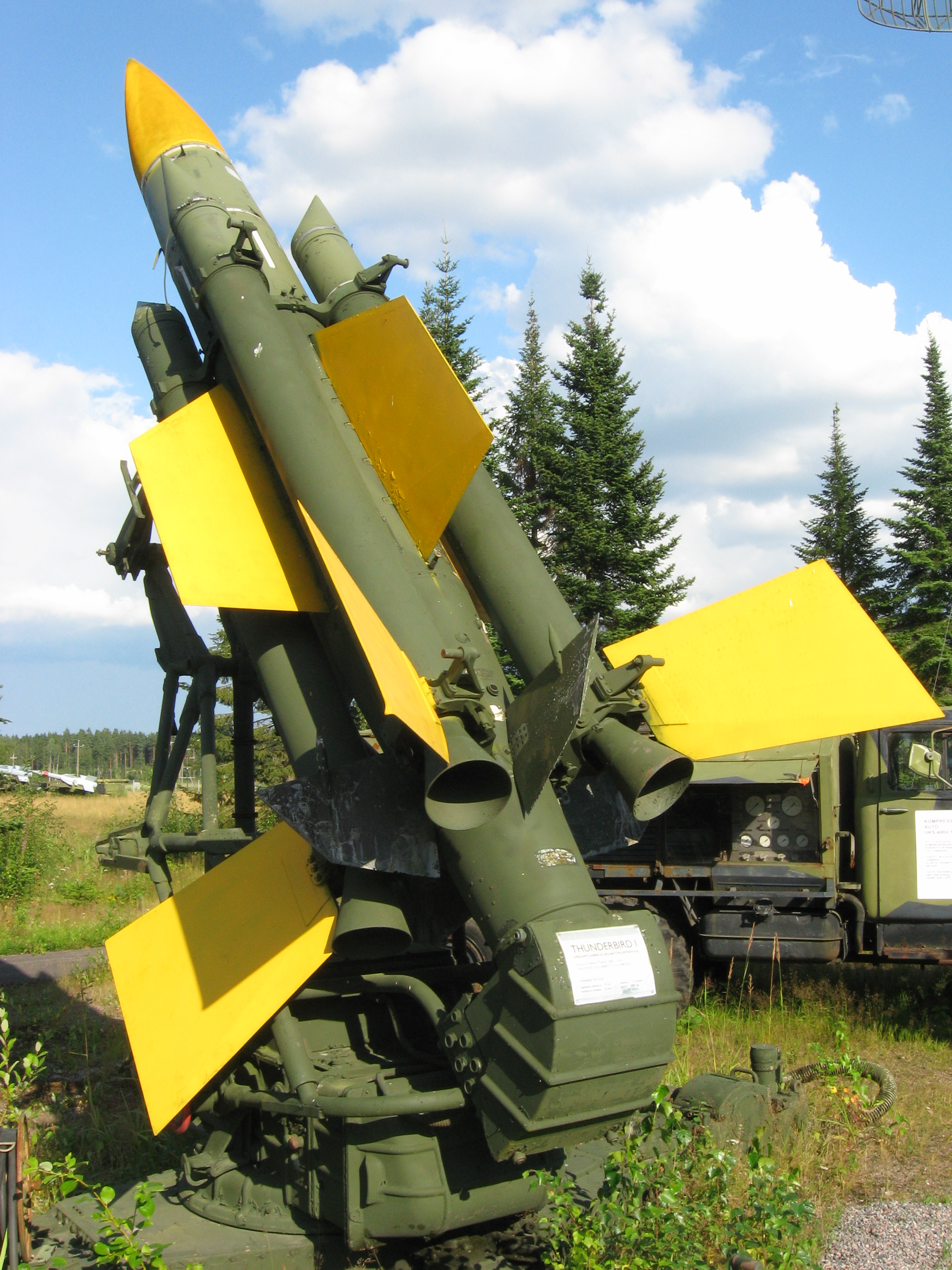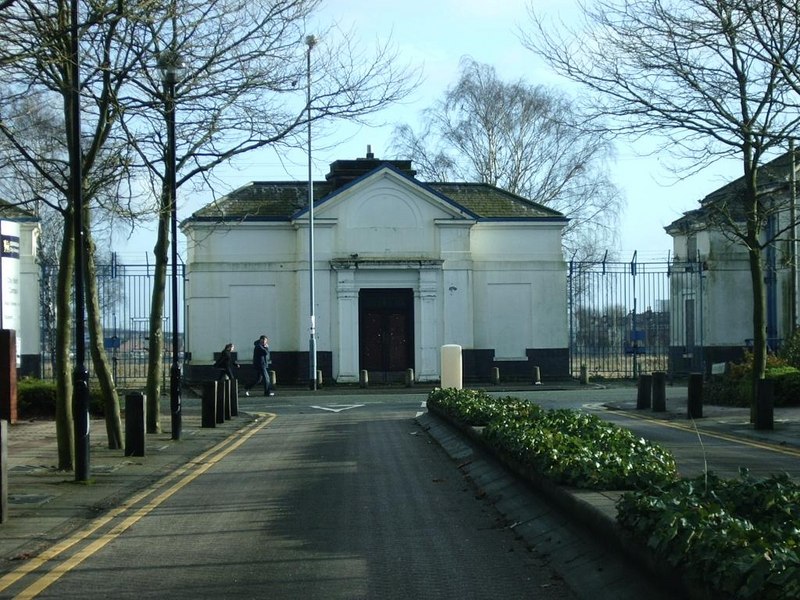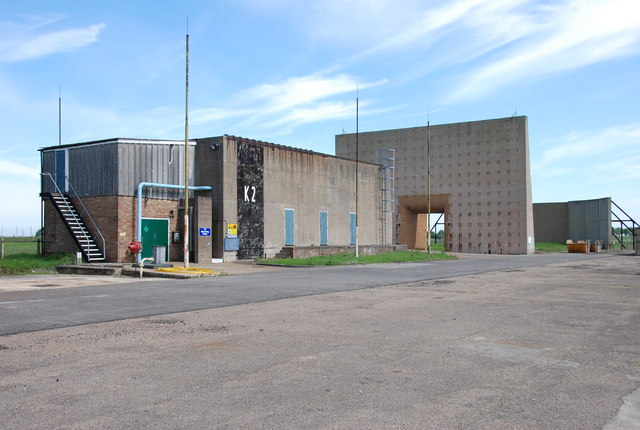|
Summerfield Research Station
The Summerfield Research Station is a development and production site for solid rocket motors in the United Kingdom officially formed on 1 September 1951 by the Ministry of Supply. It was set up on the grounds of a former World War II munitions factory just south of Kidderminster, southwest of Birmingham. It opened on 1 January 1952 and remains in use . Previous UK rocket motors, like those on the RP-3, used Cordite as their propellant, formed into a solid using various binders and then moulded into cylinders with internal cavities to control the rate of burn. While the US adopted the UK concept of shaped cavities, the UK adopted the US double-base powder, which was the basis for contemporary US rocket designs and offered higher energy. The combination of these two features formed the basis for military rockets until the introduction of aluminum-boosted propellants in the 1960s. Since its formation, the site has produced rocket motors for many UK weapons systems. Among its early s ... [...More Info...] [...Related Items...] OR: [Wikipedia] [Google] [Baidu] |
Solid Rocket Motor
A solid-propellant rocket or solid rocket is a rocket with a rocket engine that uses solid propellants (fuel/oxidizer). The earliest rockets were solid-fuel rockets powered by gunpowder; they were used in warfare by the Arabs, Chinese, Persians, Mongols, and Indians as early as the 13th century. All rockets used some form of solid or powdered propellant up until the 20th century, when liquid-propellant rockets offered more efficient and controllable alternatives. Solid rockets are still used today in military armaments worldwide, model rockets, solid rocket boosters and on larger applications for their simplicity and reliability. Since solid-fuel rockets can remain in storage for an extended period without much propellant degradation and because they almost always launch reliably, they have been frequently used in military applications such as missiles. The lower performance of solid propellants (as compared to liquids) does not favor their use as primary propulsion in modern ... [...More Info...] [...Related Items...] OR: [Wikipedia] [Google] [Baidu] |
English Electric Thunderbird
The English Electric Thunderbird was a British surface-to-air missile produced for the British Army. Thunderbird was primarily intended to attack higher altitude targets at ranges up to approximately , providing wide-area air defence for the Army in the field. AA guns were still used for lower altitude threats. Thunderbird entered service in 1959 and underwent a major mid-life upgrade to Thunderbird 2 in 1966, before being slowly phased out by 1977. Ex-Army Thunderbirds were also operated by the Royal Saudi Air Force after 1967. Thunderbird had performance similar to other semi-portable missiles like the US MIM-23 Hawk and fully mobile Soviet 2K11 Krug, although it pre-dates both of these systems. After its mid-life upgrades, which shared several components with the RAF's Bristol Bloodhound, Thunderbird featured a continuous-wave radar semi-active homing system that was highly resistant to radar jamming and deception, and was able to track targets even at very low altitudes. T ... [...More Info...] [...Related Items...] OR: [Wikipedia] [Google] [Baidu] |
British Aerospace
British Aerospace plc (BAe) was a British aircraft, munitions and defence-systems manufacturer. Its head office was at Warwick House in the Farnborough Aerospace Centre in Farnborough, Hampshire. Formed in 1977, in 1999 it purchased Marconi Electronic Systems, the defence electronics and naval shipbuilding subsidiary of the General Electric Company plc, to form BAE Systems. History Formation and privatisation The company has its origins in the Aircraft and Shipbuilding Industries Act 1977, which called for the nationalisation and merger of the British Aircraft Corporation, Hawker Siddeley Aviation, Hawker Siddeley Dynamics and Scottish Aviation. On 29 April 1977, the new entity was formed in the United Kingdom as a statutory corporation. Under the provisions of the ''British Aerospace Act 1980'' on 1 January the statutory corporation was transferred to a limited company, which then re-registered as a public limited company (plc), under the name "British Aerospace Pub ... [...More Info...] [...Related Items...] OR: [Wikipedia] [Google] [Baidu] |
Imperial Metal Industries
IMI plc (), formerly Imperial Metal Industries, is a British-based engineering company headquartered in Birmingham, England. It is listed on the London Stock Exchange and is a constituent of the FTSE 250 Index. History The company was founded by Scottish entrepreneur George Kynoch who opened a percussion cap factory in Witton, West Midlands in 1862, trading as ''Kynoch''. The business soon diversified, manufacturing goods ranging from soap and bicycle components to non-ferrous metals, but by the early 20th century it had developed particular expertise in metallurgy. After World War I it merged with Nobel Industries. In 1926 the company acquired Eley Brothers, an ammunition business. The company, by then known as ''Nobel Explosives'', was one of the four businesses that merged in 1927 to create Imperial Chemical Industries. The Witton site became the head office of ICI Metals. During the Second World War the Witton site was used for the development and production of uranium for ... [...More Info...] [...Related Items...] OR: [Wikipedia] [Google] [Baidu] |
Imperial Chemical Industries
Imperial Chemical Industries (ICI) was a British chemical company. It was, for much of its history, the largest manufacturer in Britain. It was formed by the merger of four leading British chemical companies in 1926. Its headquarters were at Millbank in London. ICI was a constituent of the FT 30 and later the FTSE 100 indices. ICI made general chemicals, plastics, paints, pharmaceuticals and speciality products, including food ingredients, speciality polymers, electronic materials, fragrances and flavourings. In 2008, it was acquired by AkzoNobel, which immediately sold parts of ICI to Henkel and integrated ICI's remaining operations within its existing organisation. History Development of the business (1926–1944) The company was founded in December 1926 from the merger of four companies: Brunner Mond, Nobel Explosives, the United Alkali Company, and British Dyestuffs Corporation. It established its head office at Millbank in London in 1928. Competing with Du ... [...More Info...] [...Related Items...] OR: [Wikipedia] [Google] [Baidu] |
Waltham Abbey Royal Gunpowder Mills
The Royal Gunpowder Mills are a former industrial site in Waltham Abbey, England. It was one of three Royal Gunpowder Mills in the United Kingdom (the others being at Ballincollig and Faversham). Waltham Abbey is the only site to have survived virtually intact. The Royal Gunpowder Mills, Waltham Abbey, were in operation for over 300 years. Starting in the mid-1850s the site became involved in the development of revolutionary nitro-based explosives and propellants known as "smokeless powder". The site grew in size, and black powder became less important. Shortly after the Second World War it became solely a Defence Research Establishment – firstly the Explosives Research and Development Establishment, then the Propellants, Explosives and Rocket Motor Establishment Waltham Abbey; and finally the Royal Armament Research and Development Establishment Waltham Abbey. The Mills are an ''Anchor Point'' of the European Route of Industrial Heritage, set in of parkland and contain ... [...More Info...] [...Related Items...] OR: [Wikipedia] [Google] [Baidu] |
Propellants, Explosives And Rocket Motor Establishment
Propellants, Explosives and Rocket Motor Establishment, usually known for brevity as ''PERME'', operated at two sites: * Waltham Abbey Royal Gunpowder Mills, known from 1977 as ''PERME Waltham Abbey'' * Rocket Propulsion Establishment The Rocket Propulsion Establishment at Westcott, Buckinghamshire on the site of the former RAF Westcott has made a number of notable contributions in the field of rocket propulsion, including input on the rocket design for the Blue Streak mis ... established at RAF Westcott in 1946, also known as ''PERME Westcott'' * RAF Spadeadam, also known as the ''Rocket Establishment'' was not officially part of ''PERME'' but was often confused with it. Research institutes in England Rocket engines of the United Kingdom Rocketry {{Rocket-stub ... [...More Info...] [...Related Items...] OR: [Wikipedia] [Google] [Baidu] |
Rocket Propulsion Establishment
The Rocket Propulsion Establishment at Westcott, Buckinghamshire on the site of the former RAF Westcott has made a number of notable contributions in the field of rocket propulsion, including input on the rocket design for the Blue Streak missile and the propulsion systems on Chevaline. It was also known as the Guided Projectiles Establishment and PERME Westcott (Propellants, Explosives and Rocket Motor Establishment, Westcott). For many years this establishment was regarded as so secret that it was not marked on Ordnance Survey maps, although it was present, from necessity, on maps for the use of pilots. History The establishment was set up in April 1946 under the Ministry of Supply. In the initial years a team of German scientists worked at the site, and examples of German weapons were on-site for study. These included the V-1 flying bomb; V-2; Feuerlilie F-55 subsonic missile; Messerschmitt Me 163B rocket-propelled interceptor; Rheintochter-1 anti-aircraft missile; Ruh ... [...More Info...] [...Related Items...] OR: [Wikipedia] [Google] [Baidu] |
Sea Skua
The Sea Skua is a British lightweight short-range air-to-surface missile (ASM) designed for use from helicopters against ships. It was primarily used by the Royal Navy on the Westland Lynx. Although the missile is intended for helicopter use, Kuwait employs it in a shore battery and on their ''Umm Al Maradem'' (Combattante BR-42) fast attack craft. The Royal Navy withdrew the missile from active service in 2017. Its replacement, Sea Venom, entered service in 2021. Development Sea Skua ultimately traces its history, indirectly, to the immediate post-war era. Growing increasingly concerned about the threat of aircraft, especially after the introduction of glide bombs during the war, the Royal Navy had long been convinced that all ships required some form of surface-to-air missile (SAM) for defence. These systems tended to be relatively large, especially in the era before vertical launch, and it was difficult to mount both a useful SAM and a conventional gun on smaller shi ... [...More Info...] [...Related Items...] OR: [Wikipedia] [Google] [Baidu] |
Sea Wolf (missile)
Sea Wolf is a naval surface-to-air missile system designed and built by BAC, later to become British Aerospace (BAe) Dynamics, and now MBDA. It is an automated point-defence weapon system designed as a short-range defence against both sea-skimming and high angle anti-ship missiles and aircraft. The Royal Navy has fielded two versions, the GWS-25 Conventionally Launched Sea Wolf (CLSW) and the GWS-26 Vertically Launched Sea Wolf (VLSW) forms. In Royal Navy service Sea Wolf is being replaced by Sea Ceptor. History The earliest point-defence missile used by the Royal Navy was the Seacat, which had been rapidly developed from an earlier anti-tank missile design, the Malkara. As a weapon originally designed to operate against slow-moving ground vehicles, the missile had subsonic performance and was of limited capability against even early jet aircraft. It was used largely due to the ease which it could be adapted to the role simply by replacing the original wire guidance system ... [...More Info...] [...Related Items...] OR: [Wikipedia] [Google] [Baidu] |
Sea Dart
Sea Dart, or GWS.30 was a Royal Navy surface-to-air missile system designed in the 1960s and entering service in 1973. It was fitted to the Type 42 destroyers (United Kingdom and Argentina), Type 82 destroyer and s of the Royal Navy. Originally developed by Hawker Siddeley, the missile was built by British Aerospace after 1977. It was withdrawn from service in 2012. Britain's first naval surface-to-air missile was GWS1 Seaslug, which entered service in 1963. This used beam riding guidance which offered limited accuracy and was useful only against slower targets. The need for a higher performance system was seen even as it entered service. Bristol Aerospace, which had recently introduced the ramjet-powered Bloodhound missile for the RAF, won the ensuing competition with another ramjet design. Compared to Seaslug, Sea Dart was faster, had much greater range, and its semi-active radar homing guidance was much more accurate and allowed attacks against supersonic targets. The sy ... [...More Info...] [...Related Items...] OR: [Wikipedia] [Google] [Baidu] |
Seacat (missile)
Seacat was a British short-range surface-to-air missile system intended to replace the ubiquitous Bofors 40 mm gun aboard warships of all sizes. It was the world's first operational shipboard point-defence missile system, and was designed so that the Bofors guns could be replaced with minimum modification to the recipient vessel and (originally) using existing fire-control systems. A mobile land-based version of the system was known as Tigercat. The initial GWS.20 version was manually controlled, in keeping with the need for a rapidly developed and deployed system. Several variants followed; GWS.21 added radar-cued manual control for night and bad-weather use, GWS.22 added a SACLOS automatic guidance mode, and the final GWS.24 had fully automatic engagement. Tigercat saw relatively brief service before being replaced in British service by the Rapier, while Seacat saw longer service until being replaced by Sea Wolf and newer technology close-in weapons systems. Seacat and Tiger ... [...More Info...] [...Related Items...] OR: [Wikipedia] [Google] [Baidu] |






_(cropped).jpg)

